Rickshaw Run FAQ’s
This article may contain affiliate links where I make a small commission for purchases you make from links that you click from this article. By purchasing through these links, you support me at no additional cost to you. Thanks for your support.
Thinking about doing the Rickshaw Run after following our experience in April 2014? You’ve read through all the adventurous marketing hype and you are ready to sign up! But wait – you’ve got a few Rickshaw Run questions first such as how do you determine a route, where do you sleep, where do you eat, how do you stay safe, do you need any mechanical knowledge, and how the hell do you drive a rickshaw? These were all things that went through my head as our departure date neared and I realized that I knew very little about what I was getting myself into – which might have been a good thing!
The Rickshaw Run is a wild adventure, but I wouldn’t call it a holiday. It’s hard, it will press your limits, it will exhaust you, but it will also provide rewards greater than all of the pain. It will also show you a culture that appears chaotic, but somehow all works. And the best part is you become one with that chaos for 2 weeks. And because it’s only 2 weeks, it’s not necessary to quit your job or negotiate massive time away. It’s possible to actually do this as part of a long vacation – but just don’t plan on it being relaxing.
For those of you contemplating the Rickshaw Run, I’ve collected a few of the FAQ’s that I tend to get asked about the experience and will be adding to this as new questions arise.
Table of Contents
Where Do You Stay?
It’s useless to book rooms in advance as only 2 days out of 14 did we actually end in the town we intended to end in. Shit happens, and the Rickshaw Run is impervious to planning. This means that you will need to find lodging at the end of each day. We stayed in cheap hotels – often in pretty small towns that only had one or two hotels. The hotels did not get many foreign visitors – so when you pull up to stay they were a bit surprised. Most of these small town hotels cost about $16 to $25 dollars for a double room with air conditioning (a must!). The bathrooms normally had hot water and bucket showers and about 50% of them had squat toilets. There were plenty of mosquitos to worry about and I highly recommend a sleep sheet. Most of these places were pretty grungy.
I lied a little bit – it is helpful to plan a bit. Normally 90 minutes before the sun went down we looked at the map and tried to figure out where the nearest town was that would be big enough to potentially have a hotel and shoot for reaching that before sundown if possible. Thanks to spotty cell/internet connections that seldom worked as planned – but we tried. I still remember one town where we planned to stop for the night that Google said had 38 hotels in it. Super – this was going to be easy! Yet once again we found out that nothing is ever easy in India…we went through the town and never found one. We finally had to stop and ask and ended up going to the only one we could find – and it wasn’t pretty.
We did stay at a few stunning resorts though – upwards of $100 to $200 a night. Sometimes you really, really need to treat yourself and sleep in a proper bed and have a good shower. But you need to be in bigger cities or resort towns to find the nicer places.
What and Where Do You Eat?
The short answer here is you eat at roadside stalls, small family owned ‘restaurants/stalls’, and hotel restaurants.
Unless you want to survive on chips and chocolate (which melted immediately) for two solid weeks – you had to actually take some risks when it came to eating. We took a lot of risks – ones that I thought for sure wasn’t going to have a happy ending. But I’m happy to report that our convoy of 7 people all had very minor stomach issues. Miracles do happen! And yes – based on some of the places we ate it was truly a miracle.
You eat wherever you can find food. This meant we ate at roadside stalls – the kind that most foreigners would run from screaming. Charlie was the best at spotting little ‘restaurant’ stands but nothing was off limits. And these were places that didn’t have a menu – they normally made one thing – like paratha, roti, or biryani . You didn’t have to waste time deciding – after the initial shock of you coming into their restaurant, they just started bringing you food. Most all of them expected you to eat with your hands like the locals. And I’m willing to bet that for 90% of the places we stopped and ate during the day (breakfast and lunch) we were the only foreigners they were going to see all year.
We’d stop for chai and dosa or idli in the mornings. But after getting tired of dosa and idli – we started to convince the cooks to make an omelet too via some good charades. Sometimes this worked and sometimes it didn’t. But it never quite worked like we had intended. We simply wanted a fried egg or omelets, but what we got was a fried egg with chili powder and Indian spices on it, or sometimes they just mixed the egg in with the dosa. Both were ok – but not quite what was intended. But the general rule is you eat what you are given – else you starve or stick to the chip diet.
The one day we found an air conditioned fast food chicken place for lunch – it was like a group orgasm.
In the evenings we were so exhausted that we only just ate at the hotel restaurant. We didn’t have the energy to go out and wander around looking for great food. Most of the hotel restaurants were pretty standard mix of Indian and Chinese – all super spicy. By the second week my favorite phrase was “no spicy”.
How Do You Learn How to Drive a Rickshaw?
Prior to the race starting, you have 3 days to get used to your rickshaw. A person from the Adventurists takes you through a quick demonstration (as a group) on the brake, throttle, gears, and off you go to try on your own rickshaw and grind through the gears. If you you’ve driven a motorcycle before, then it will probably be easy to pick up (except the brake is a peddle on the floorboard). If you know how to drive a manual transmission vehicle, then you’ll pick it up moderately well (yet I still struggled the first days as the clutch and gears are like a complex puzzle). If you don’t know how to drive a manual transmission – then Lord help you.
But the good news here is that even if you fall into the last category – I know many people who drove the rickshaw and didn’t die. In fact, Anastasia, the other woman in our convoy grew up in/around NYC so she had never EVER driven before. She didn’t even have a license in the US – I’m not lying when I say she hadn’t driven before. In all honestly I thought she was crazy – but she did it and by the end of two weeks she was driving around like anyone else. Actually – she had my greatest respect for that. It made me wonder if you are better off not having any pre-conceived ideas when it comes to driving – no rules that you are used to following. I bet it actually helps you in India to know nothing since everything you know about driving is thrown out the door anyway as soon as you get behind the throttle.
If you want to get a better idea about the vehicle you are dealing with – then here’s more info on the rickshaw.
What is the Driving Like in India?
Many phrases describe driving in India:
• A functioning anarchy
• Chaos
• Lawless
• A shit show
• Horns are in control
• It’s like playing a video game – for real.
• But strangely it works. And I know this sounds weird – but it’s harder to be a passenger and watch the craziness than to actually be in the driver’s seat and be part of the craziness.
Here’s a few tips to understand when you get into the drivers seat.
• Know where your horn is. It is the most used part of the car – more than the brake.
• If there’s space anywhere on the road– it will be used.
• Lines have no meaning.
• Rickshaws are one of the low men on the vehicle totem pole (bikes and walkers are lower, but cows are much higher). Know your place. Do not take on vehicles higher than you…you’ll lose.
• Blinkers are not used to turn – they are used to communicate when you can pass.
• In India they drive on the left side – in theory – but don’t EVER rely on that. Remember – no rules. You will have vehicles coming at you on all sides and head on. Be alert…and use the horn.
My best advice is just get in and go – it’s like jumping out of a plane – maybe worse. Stay alert and USE YOUR HORN! You’ll get used to it.
How Did You Determine Your Route?
Every night at dinner we’d look at the road atlas we had and make a plan for the next day that would keep us going in the correct general direction we needed to. I can confidently say this now – it’s useless to have any route plan (unless you are trying to meet people along the way) before you start. It’s a waste of time to plan more than 1 day ahead.
I know, I know – you want to plan. You need to plan. Those type A genes need to be fed a plan. But don’t. Just go, learn how to drive, and figure out your plan for day 1.
If you have to plan something – then do a high level plan of approximately how many miles you may need to cover a day to make it to the end by the date you need to arrive by. That at least gives you a little gauge on what your days are going to be like. But even that will be thrown out the door pretty quickly as we never seemed to make the mileage we intended to each day and were on a constant mode of catch up.
We picked up a map of India and a road atlas in India and the only thing we really used was the road atlas and our GPS on our phones. Be sure to cache your maps on your phone though before you start as internet connectivity is unreliable and without internet your maps won’t load on your phone.
Do You Need a Special Motorcycle License?
If you listen to the Adventurists, they will tell you that you need a motorcycle designation on your license and that you need an international license to participate. This is what they are supposed to say. However, it’s rubbish. I did have an international license – but I did not have any motorcycle designation and in fact had no idea how to drive a motorcycle at all. I’m not sure what the laws are in India when it comes to a license, however we were pulled over a number of times by curious policemen and only once did they ask for our license and Charlie handed over her NY license without any special motorcycle designation and no one cared. Honestly – the police mainly had one goal, and that was to have a picture taken with us, they didn’t care about our license or paperwork. We were pulled over once by the pollution police (ironic in India), but the Adventurists provide you with all of the paperwork on the vehicle including the pollution test certificate so they looked at our paperwork, asked for a picture, and sent us on our way. In an informal poll I conducted, the majority of teams didn’t have any motorcycle experience/designation on their licenses. And Anastasia (our convoy teammate) didn’t even have a license at all!
What Equipment Do you Need?
The Adventurists gave us a little tool kit that had a few wrenches in it, but it was minimal. We didn’t take anything else as it seemed that if a tool was needed, it miraculously appeared from a local. However I did collect a list of ‘non-traditional’ tools that were should be on everyone’s list:
• Duct tape
• Funnel and hose for filling gas (you can pick up in India)
• Plastic zip ties
• Bungee chords
• Bottle holders (can be bought and installed once you are in India)
• Windex and paper towels (especially if you are driving at night)
• Rags
• Ear plugs
• Eye drops
• Carbon filter mask if you are at all asthmatic or susceptible to pollution
• Spray bottle (great for cooling down yourself, and cooling down the engine or brakes)
• US coins (locals were constantly asking us for American coins – I have no idea why)
• USB/lighter charger (Order on Amazon and you can pretty easily install yourself by hooking up to the battery)
As a side note we also had a stereo installed – but honestly only used it a couple of times – it was so loud in the rickshaw that the person couldn’t hear it anyway without making the person in the back seat deaf. For us we’d forgo the stereo next time.
Was it Safe?
From the moment I published that I was going to do the Rickshaw Run, I had people warning me about all of the dangers. Mainly the warnings were about dangers for women, but it also included dangers about some of the states in India that we would have to pass through which were particularly lawless. I’ve never been warned so much about my travels and surprisingly the warnings mainly came from Indian locals who lived in larger cities. I was rather nervous about the whole thing and even though we didn’t have any issues even through the lawless states, other teams did. Some teams were stopped by bandits, some were escorted out of the state by policemen, some were taken at gunpoint and told to leave. But we were fairly cautious sticking to daylight driving and bigger highways through some of the questionable areas. I never felt in danger – but everyone’s experience is different.
As for the women’s issues – I never felt in danger there either. Sure, we were stared at, and many men wanted to take pictures, but we never really had any instances where we were in any danger. We had a young boy who made an inappropriate grope and we did have a man barge into our hotel room one night – it was alarming – but it wasn’t necessarily a threatening situation. He came in because he wanted a tip; he actually demanded a tip. He was an attendant in the hotel and they typically don’t have women staying at the hotels, so he just opened the door as he normally would with an Indian guest I suppose. Granted, it wasn’t right at all and we were a little freaked out about it, but we learned very quickly to lock our doors. And no – he didn’t get a tip.
Our good luck in the safety department was helped by the fact that we were driving in a convoy of 3 rickshaws and there were men with us in the other rickshaws. I’m not sure what our experience would have been if it had just been Charlie and me alone.
Should You Join a Convoy?
Speaking of convoys – should you go it alone or join people? There are pros and cons to both. Even though Charlie and I are independent women travelers who didn’t have an issue being on our own, we are also social people and when we accidentally met Peter and Stephen the first night at our hotel we decided we wanted to stick with them. Then came the 3 New Yorkers in a rickshaw (Doug, Doug, & Anastasia) and soon we were a convoy of 3. That was plenty big as it gets hard to make decisions and manage personalities with much more than that. The hardest part is what happens when one of the teams breaks down – in a convoy you wait normally which can be unfortunate if it’s not your rickshaw that is broken down. But I must admit – some of the waiting was the most fun, or at least yielded the most laughs. Luckily Stephen and Peter had mechanical knowledge, so that was a huge help at diagnosing problems. Charlie and I were good at finding food and lodging, and the New Yorkers were good at throwing money at problems….and keeping us all laughing.
It’s your choice on joining with other teams – but you should all be in agreement on what happens when you have breakdowns or disagreements.
How Did You Find a Mechanic or Do Repairs?
The first thing required with repairs is patience. If we broke down and it was something our convoy could fix on our own we’d attempt it – but normally we needed help. Most of the time we were able to drive it a little distance to the next town to get help. Sometimes we just had to wait by the side of the road until someone stopped. It normally didn’t take long for someone to stop and try to help. Of course they always wanted a picture too. Before you knew it there was a crowd of people around your rickshaw – sometimes a local just hopped in and miraculously fixed it, and sometimes it was more complicated. The good thing is that rickshaws are everywhere – which means there are lots of parts and people who normally know how or where to get them fixed.
We also quickly learned if we needed to find a mechanic or a welder (which was our most common problem to fix) the best place to stop in the town was where other rickshaw drivers were parked (like a taxi stand). They always knew where mechanics were or would simply call them to come on over and fix the problem on the spot. Or they could lead you to a mechanic for a small fee. Another good place to stop was truck stops as there were also people there who could fix or weld things.
Was There Internet?
Most places did not have wifi – especially the cheap hotels in the small towns we were staying in. The best chance at connectivity was to get a sim card for your phone. For tourists in India it’s a 2 day process to get an India sim card for your phone that requires a little phone interview and a decent amount of paperwork – but it’s the best way to get any sort of connection. And from my perspective a connection is extremely helpful during the Rickshaw Run for maps/directions, finding hotels, and Google translate for starters.
Deciding what mobile phone provider to go with is an important decision for the race since you are covering the whole country and you are in some pretty remote areas. Our convoy had a number of different sim providers, but the best seemed to be Vodafone or Idea. Charlie had Tatadocomo which worked great in Kerala – but then stopped working in any reliable form after that.
As another option you can get a USB stick that picks up a cell signal/data and emits a wireless signal allowing you to connect up to 5 devices at once. However you have to go through the same paperwork/interview process and once again the provider you choose is key.
Finally you can also rent a mifi device before you come that works off of Indian cell signals (like the USB stick). I used a device from Telecom Square and that worked fairly well (only at 3G speeds occasionally) in specific states. However some states it didn’t work at all.
We used all three of these to try to cover our bases – and there were still plenty of times we didn’t have any connectivity!
How Did You Get Petrol?
There are gas stations everywhere, but we all carried a 10L jerry can and filled up with that all the time. Then when we went to a gas station we’d fill up the jerry can. We did this because you had to mix 2 stroke oil in with your petrol before filling your tank. There’s a ratio that the Adventurists will notify you of and you need to follow that formula and make sure the oil and petrol are mixed well before you fill it into your rickshaw.
We used about 10 to 15 L per day and spent about $15 per day on petrol.
Gas stations attendants were always surprised to see us and this generally meant that we also get our picture taken with them too.
How Do You Communicate With the Locals?
Many people in India have taken English classes during their schooling. Of course in bigger cities finding people who speak English is much easier. However, traveling in little villages normally meant that very little English was spoken. In those situations we just used charades or pointed to things in the engine when repairs were needed, etc.
Overall, communication wasn’t any big issue.
How Many Hours a Day Did You Drive?
We learned very quickly that we had to use every ounce of daylight that we could in order to make the distances we needed to in 2 weeks. On average we would drive from 5:30am to 6PM each day. However it was necessary to stop and rest the rickshaw engines every 2 hours and lord knows we had many unplanned stops and issues. So we didn’t actually drive this whole time.
We learned that the best time to drive and make good progress was early in the morning, so we’d get up with first light and go. The traffic was very light, it was cooler, and the rickshaws ran well after a good night’s rest.
We didn’t have time to make stops to see sights really. The Kochi to Shillong route is the longest route in the Rickshaw Run so that gave us no free time to mess around.
How Did Locals React to You?
This was probably my favorite part of the whole race, experiencing the reactions of the locals to what we were doing. There are few times when words like astonishment perfectly describe a reaction. In the small towns we were like aliens flying in on a hover craft. They were astonished. When we stopped anywhere, it didn’t take long for a crowd to gather around the rickshaws and soon it seemed like word would get out in the whole village and the crowd would build and build. They would ask for pictures, but mainly they would just stare and watch our every move.
We would be asked for autographs, and pictures constantly. We’d be sitting and eating somewhere and people would be taking our photos from every corner. People would invite us to their homes, which because we were always trying to make up mileage we normally had to decline. I figured this was what it was like to be famous and have paparazzi follow you around! Everywhere we went we felt like rock stars, sometimes annoyingly so.
Overall, people were really nice (if you could get used to the intense staring) and we’d try to pose for as many pics as we could before we had to be on our way. And in all truthfulness, we were doing the same taking pictures of them constantly.
I’m sure if you are considering doing the Rickshaw Run, you probably have more questions, but hopefully this is a good start to your curiosity!
To learn more about the Rickshaw Run check out the Adventurists website. It’s run 3 times a year in different parts of India and generally takes 2 weeks total to complete.
- Get Ready for the Rickshaw Run
- Rickshaw Run FAQ’s
- Sleepless in India – It’s Real Now
- How to Follow Us on The #RickshawRun
- What is a Rickshaw
- Rickshaw Run Update From the Road 1
- Rickshaw Run Update From the Road #2
- Rickshaw Run Update From the Road #3
- Rickshaw Run Update From the Road #4
- Rickshaw Run Update From the Road #5
- The View From My Rickshaw
- The View Inside My Rickshaw
- Rickshaw Run Thrills and Agony

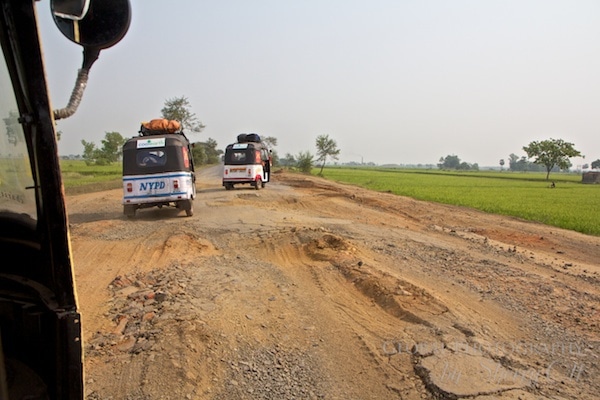
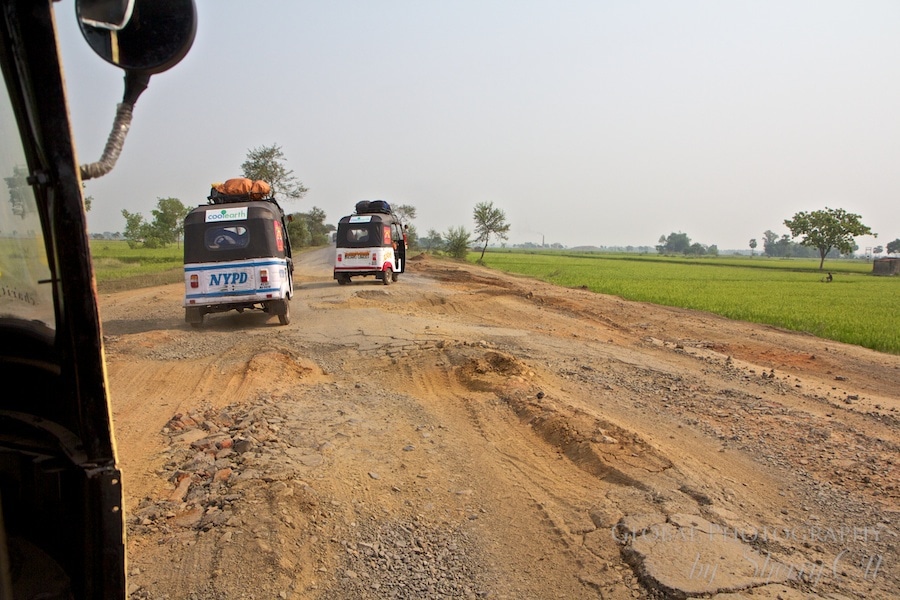
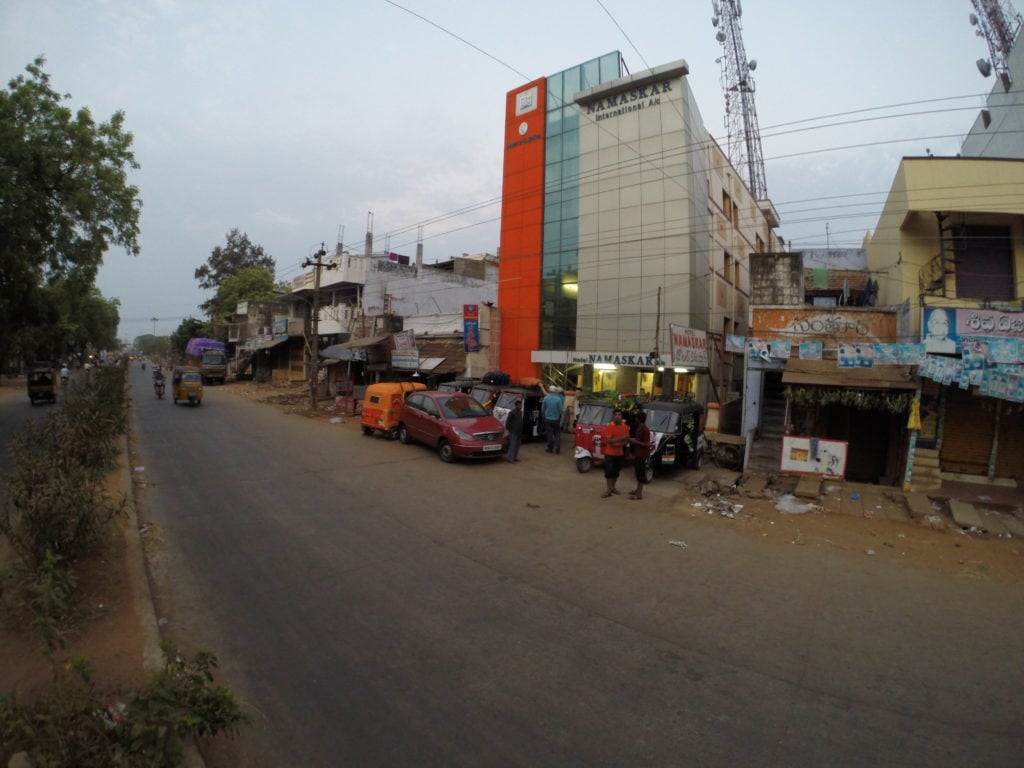
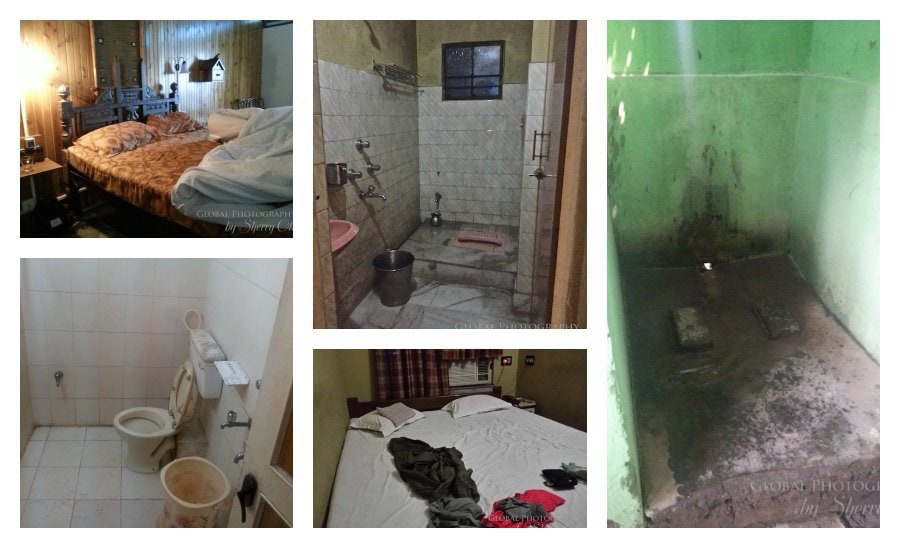
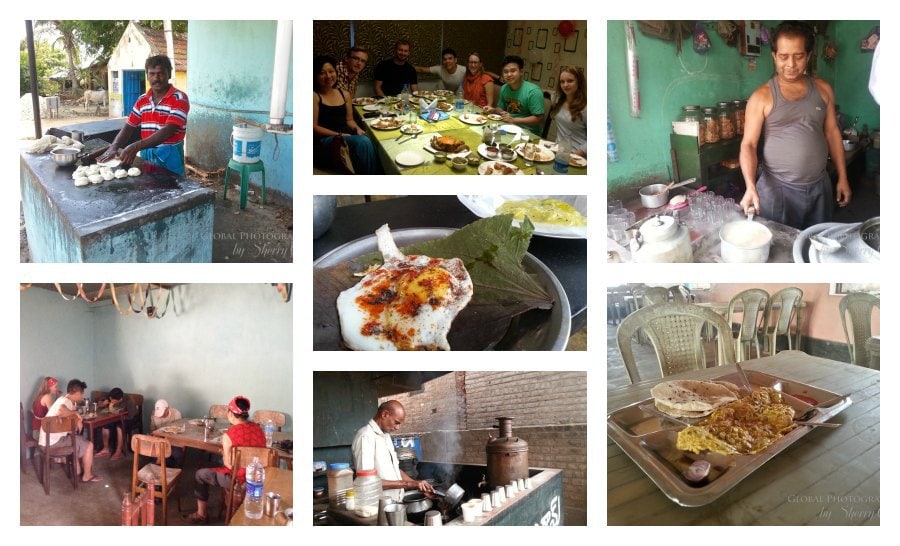
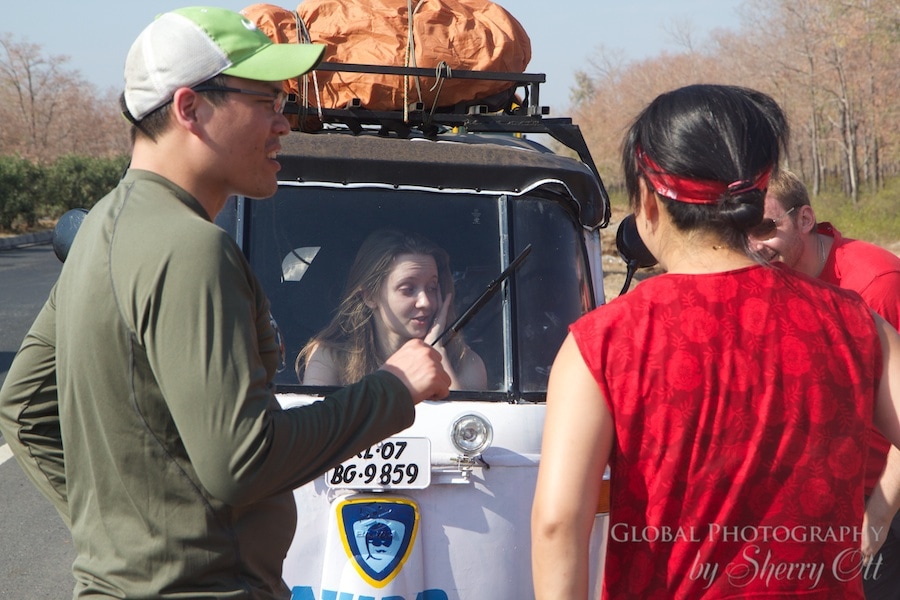
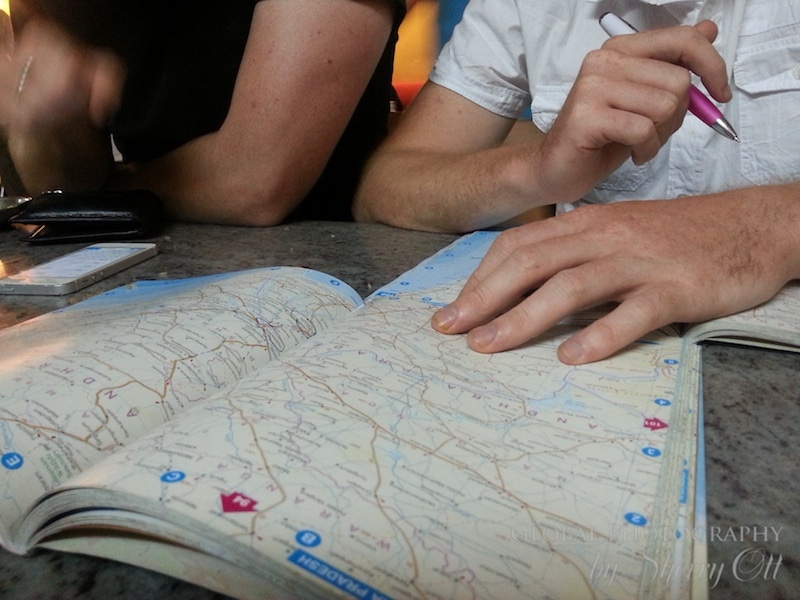
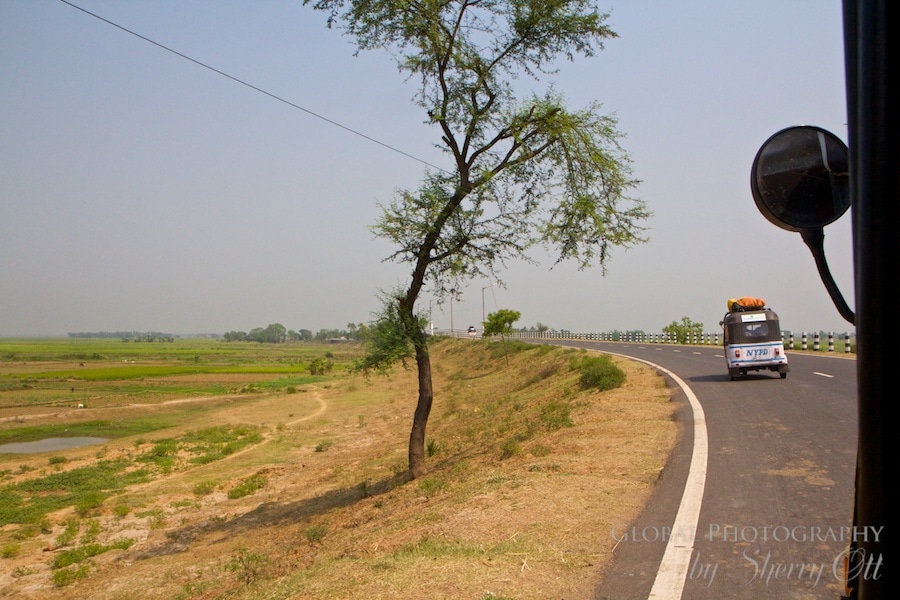
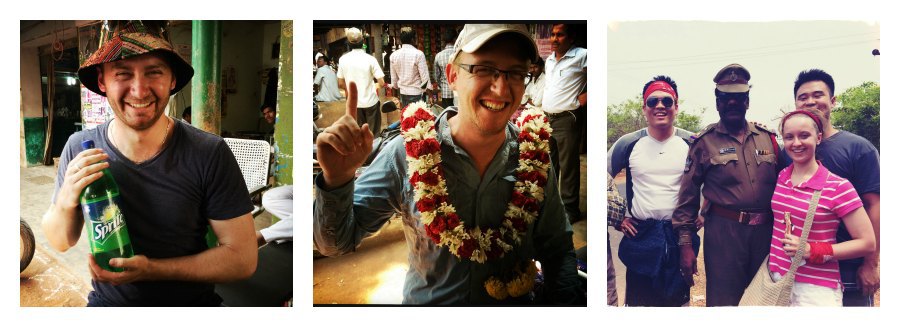
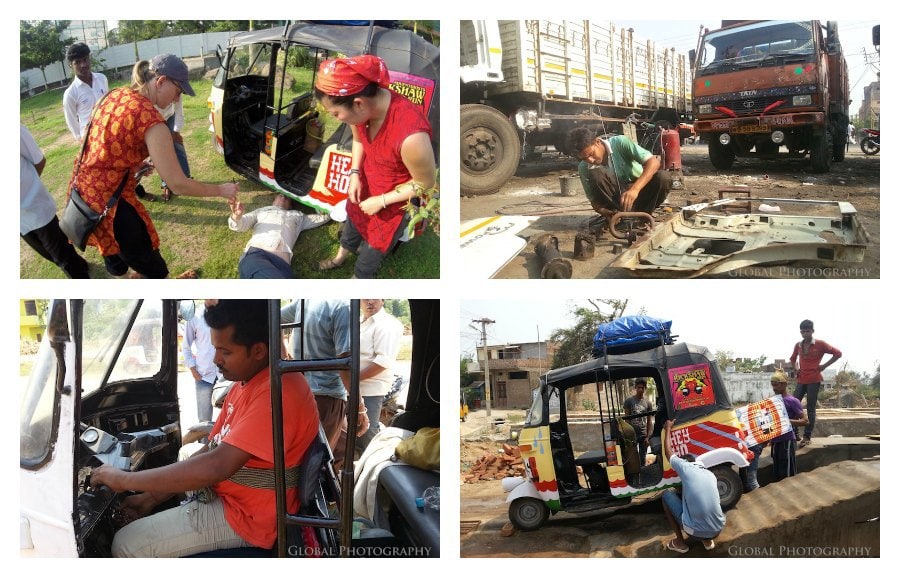
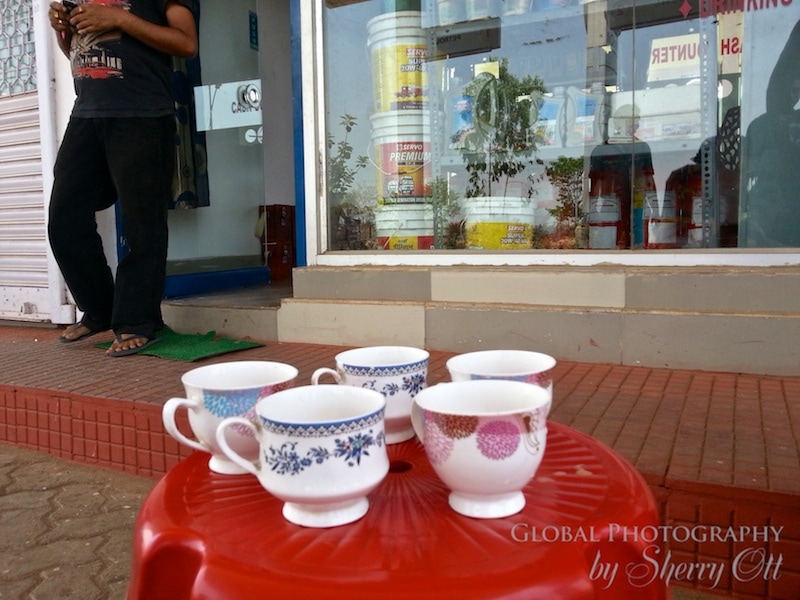
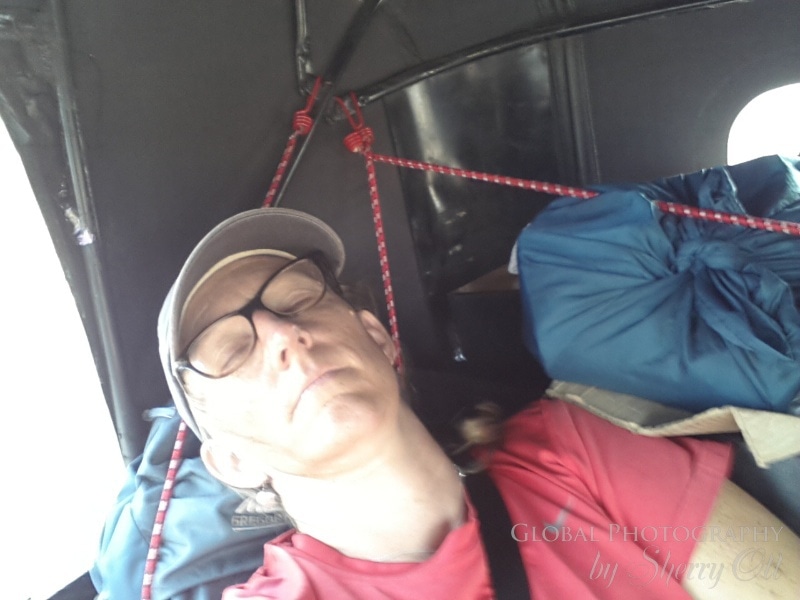
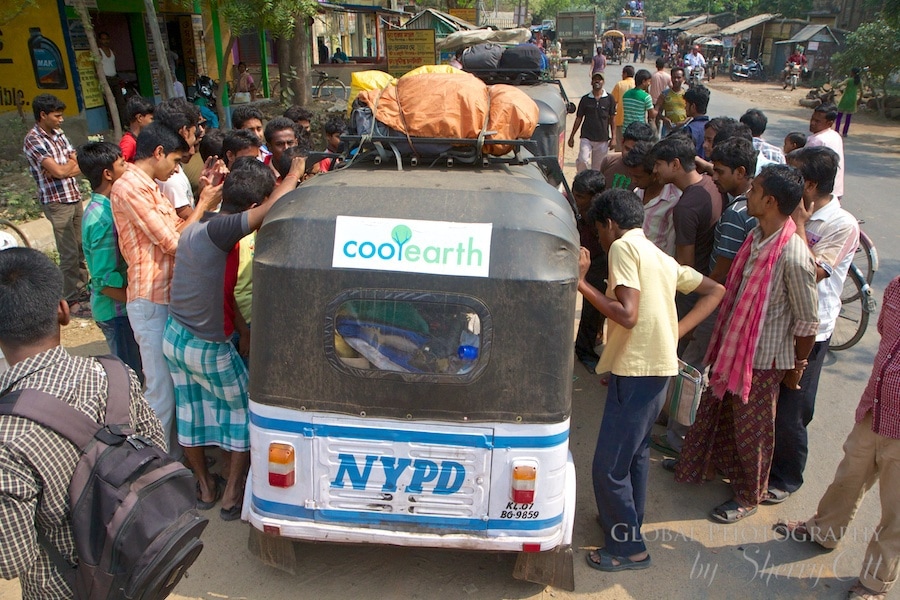
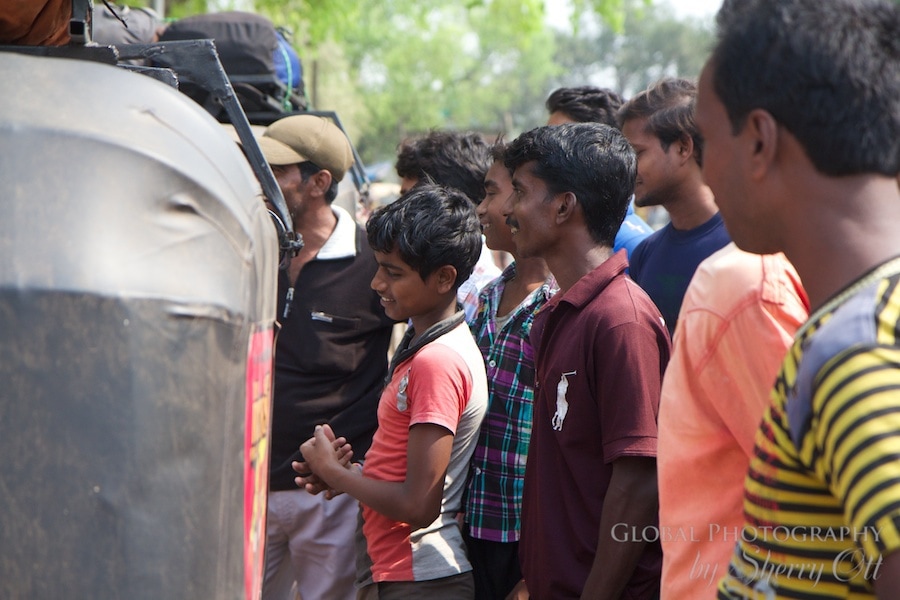






LOVE it! The interactions with locals would be my favorite part. I love the photo of the crowd gathered around the NYPD rickshaw.
What an incredible experience!
Having just come back from my first India trip, it’s as you say – nothing is ever certain in India! I drove a rickshaw for about three minutes, and that was enough for me!
This is so cool! It all looks like great fun apart from the bathrooms!
Wow this is the best info I have seen so far. Awesome insight in to what is an amazing adventure Tracee Knowler and I are coming from New zealnd to do this race in August ! Can’t wait.
That means you leave from Shillong – right? Ohhhh – what a fun time that will be – maybe you’ll even get our old rickshaw! Best of luck and let me know if you have any questions!
It’s great that you chose charity: water since the latest abduction, gang-rape and murder in India was related to the lack of toilets (esp. in the rural areas).
Thanks Monnette. India still doesn’t have a lot of indoor plumbing for the rest of the country outside of the big cities. It’s surprising and it was good to experience it with our own eyes.
Great article. Very informative. Every question I wanted to ask was answered in the next paragraph. Great stuff. I signed up for the one in January with 3 girls (Im male)so only now am I trying to figure out what we are doing! I glad that nobody really has safety issues.
I’m really looking forward to the bathrooms….
Hi Sherry,
A friend and I are keen to follow in your footsteps, sometime in 2016 most likely. I’ve read through your blog and it is fantastic – what an adventure.
I just had a question for you regarding your statement that a motorcycle licence is not required. I understand that a licence is probably not needed in terms of driving the rickshaw or the authorities, but what about from an insurance perspective? It’s my understanding that your insurance company is not going to pay up if you are involved in an accident while driving your rickshaw, as you would technically be driving it illegally. In the worst case medical treatment and repatriation could be $100,000 or more, in which case you would be in a heap of trouble if the insurance company says no. I just wondered what your views on this were and how you handled the insurance question?
Thanks
Justin
Justin – glad you found the info useful. Regarding insurance – I honestly don’t know. I we had been in an accident I would have gotten treatment and then filed a claim – I don’t really know if they’d look into whether I was driving and had an appropriate license. I had an international driving license – but not a motorcycle license. Sorry – I can’t really help with this one. but if you are at all worried about it then get one – it certainly can’t hurt! Let me know if you do it in 2016!
In regards to motorcycle licenses. You don’t actually need to get one if you are a UK resident if you have a full driving license due to the existence of the reliant robin which is classed as a car. All you need is to get your international drivers permit and get a stamp in the 3 wheeler section in it. Job done. If you don’t have this stamp or a valid motorcycle license you will not be covered in the case of an accident IF you were driving at the time. I really would not recommend going if you have no drivers with the adequate paperwork because if you have an accident (which to be quite honest is fairly likely at some point in your trip) nobody will be covered. If you have 1 licensed driver that is ok because of course they were driving when you had the accident.
Hi,
When you signed up and paid your entrance fee to the adventurists were you provided with a joining pack or any other information? Or did you just turn up at the start line?
As I recall, we didn’t get sent any pack – however there was a place to log on on the website then with all of the team info and important dates, etc. It was definitely all online. When are you going?!!!
Its really great and adventurous. Me being an Indian can join this race with you peoples???
I don’t know why not. Anyone can join.
May I ask what your budget was for the whole trip? Just so we have an estimate on how much to save up. Great article by the way!
I honestly don’t remember! I”m sorry – I probably should have recorded that somewhere!